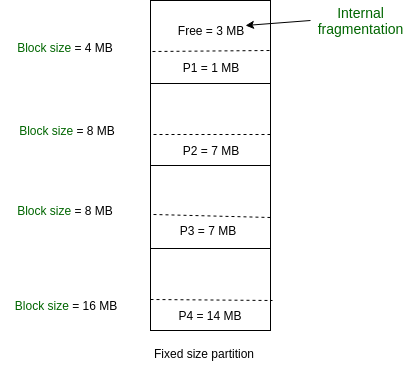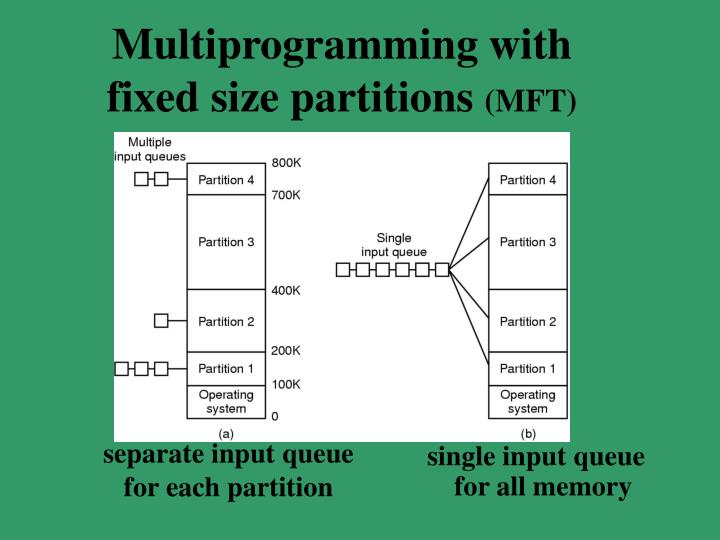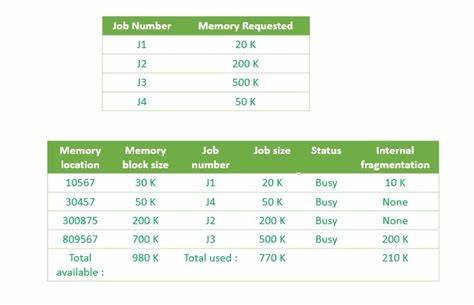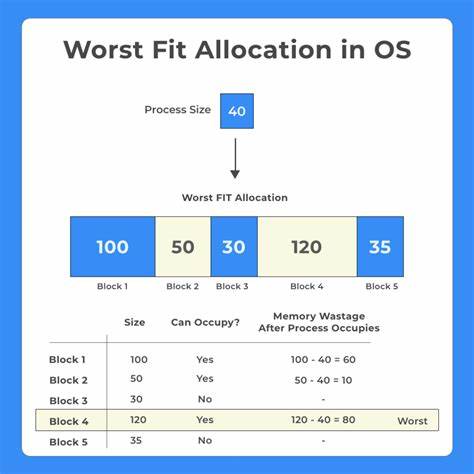MFT-FIXED SIZE PARTITION
MFT
This is the oldest and simplest technique used to put more than one process in the main memory. In this partitioning, the number of partitions (non-overlapping) in RAM is fixed but the size of each partition may or may not be the same. As it is a contiguous allocation, hence no spanning is allowed. Here partitions are made before execution or during system configure.
As illustrated in above figure, first process is only consuming 1MB out of 4MB in the main memory. Hence, Internal Fragmentation in first block is (4-1) = 3MB. Sum of Internal Fragmentation in every block = (4-1)+(8-7)+(8-7)+(16-14)= 3+1+1+2 = 7MB. Suppose process P5 of size 7MB comes. But this process cannot be accommodated in spite of available free space because of contiguous allocation (as spanning is not allowed). Hence, 7MB becomes part of External Fragmentation.
First Fit
This method keeps the free/busy list of jobs organized by memory location, low-ordered to high-ordered memory. In this method, first job claims the first available memory with space more than or equal to it’s size. The operating system doesn’t search for appropriate partition but just allocate the job to the nearest memory partition available with sufficient size
Best Fit
This method keeps the free/busy list in order by size – smallest to largest. In this method, the operating system first searches the whole of the memory according to the size of the given job and allocates it to the closest-fitting free partition in the memory, making it able to use memory efficiently. Here the jobs are in the order from smallest job to largest job.



